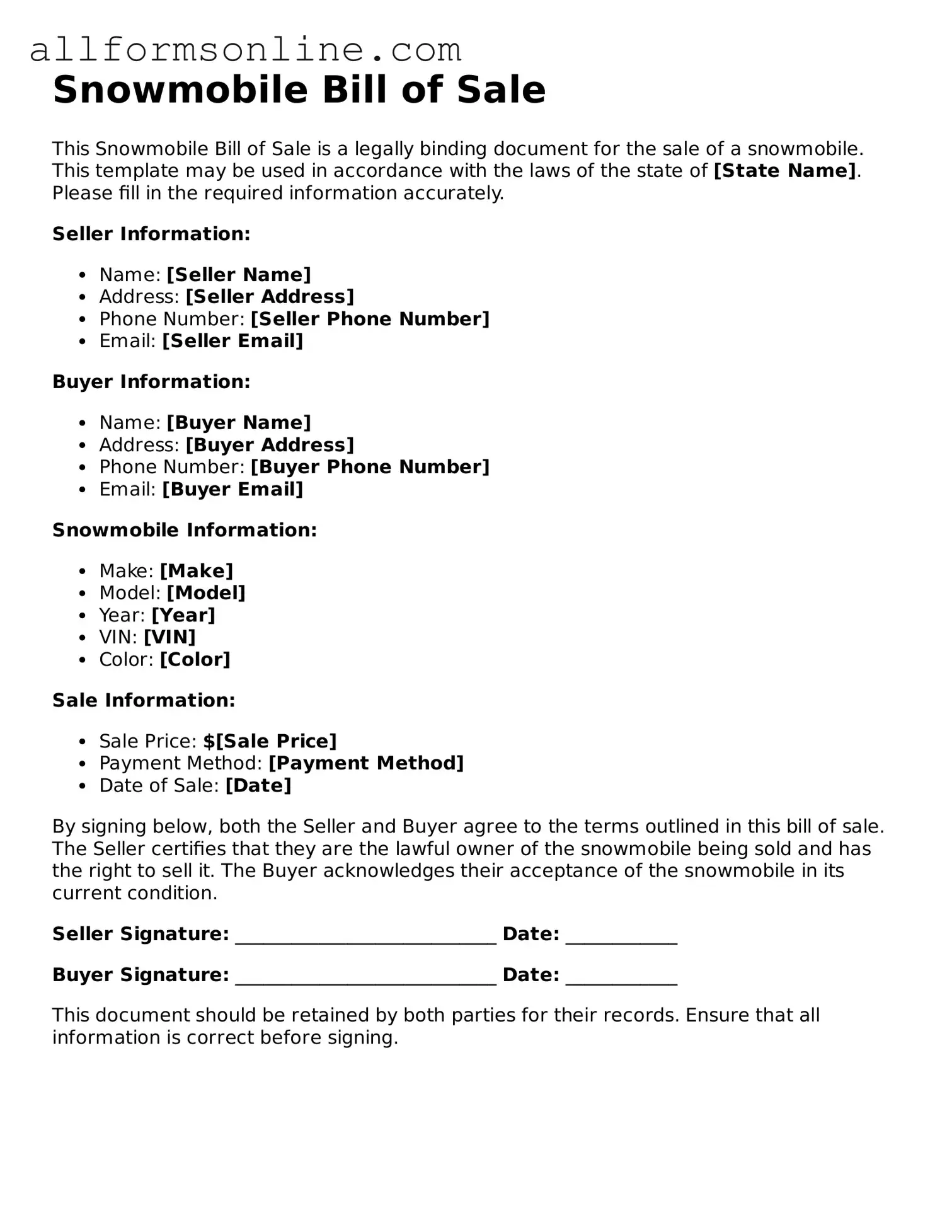What is a Snowmobile Bill of Sale?
A Snowmobile Bill of Sale is a legal document that records the sale of a snowmobile from one party to another. It includes important details such as the buyer's and seller's names, the snowmobile's make, model, year, and Vehicle Identification Number (VIN). This document serves as proof of ownership transfer and can be important for registration and insurance purposes.
Why do I need a Snowmobile Bill of Sale?
This document is essential for protecting both the buyer and seller. For the seller, it provides proof that they have sold the snowmobile, which can help avoid future liability. For the buyer, it serves as evidence of ownership, which is necessary for registration and insuring the snowmobile. Additionally, it can be useful in case of disputes regarding the sale.
What information should be included in the Snowmobile Bill of Sale?
Key information to include in the form includes the names and addresses of both the buyer and seller, the snowmobile's details (make, model, year, and VIN), the sale price, and the date of the transaction. Both parties should sign the document to make it legally binding. It's also a good idea to include any warranties or conditions of the sale.
Do I need to have the Snowmobile Bill of Sale notarized?
Notarization is not typically required for a Snowmobile Bill of Sale in most states. However, some states may have specific requirements, so it’s wise to check local regulations. Notarizing the document can add an extra layer of authenticity and may help in case of disputes.
Can I use a generic Bill of Sale form for my snowmobile?
While you can use a generic Bill of Sale form, it’s best to use a specific Snowmobile Bill of Sale template. This ensures that all relevant information is captured and meets any state-specific requirements. Using a dedicated form can help avoid missing important details that could complicate the sale.
What should I do after completing the Snowmobile Bill of Sale?
After completing the Snowmobile Bill of Sale, both the buyer and seller should keep a copy for their records. The buyer should take the signed document to their local Department of Motor Vehicles (DMV) or equivalent agency to register the snowmobile in their name. It's also advisable to notify the insurance company about the change in ownership.
